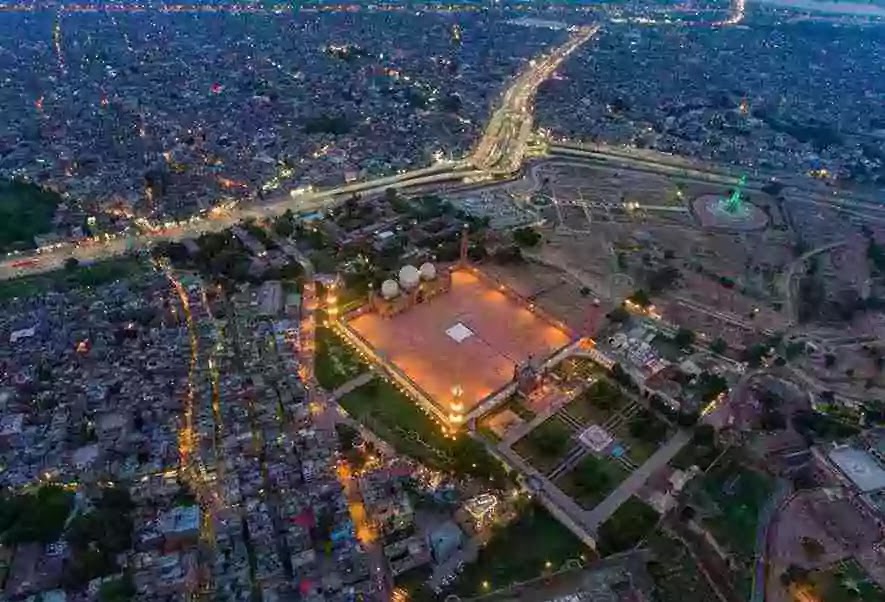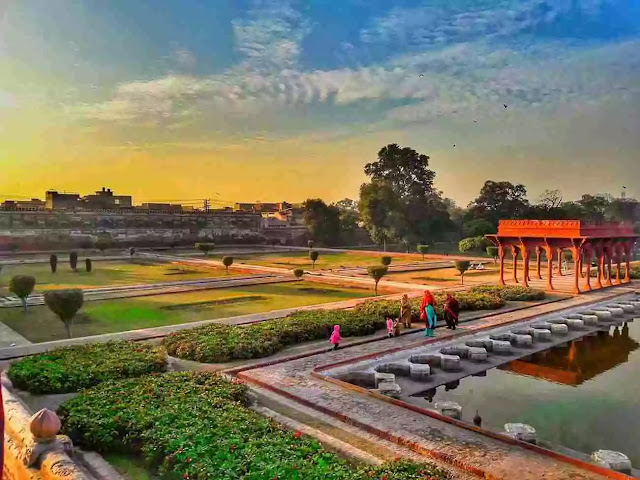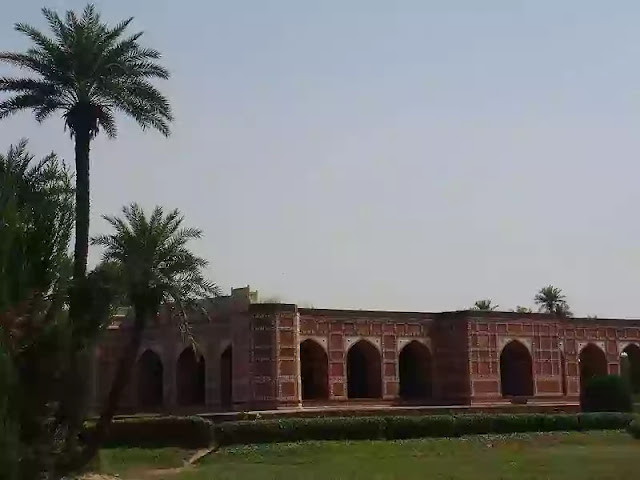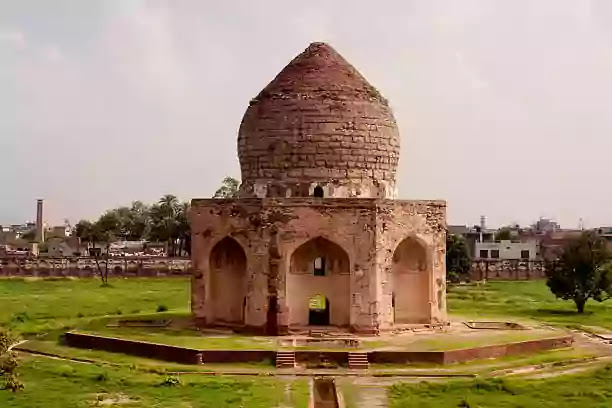Historical places in Lahore Pakistan are one of the biggest reasons for the boost in tourism activities along with other features of the city that attract tourists from all over the world. According to some historians, it dates back to 1200 BC proves city Lahore is very rich in its history, so has a large number of ancient and historical places.
Famous Historical Places in Lahore
Not only Lahore's history, but the old and ancient buildings in the city give it a distinguished and unique place among other cities of the region. So it hosts a large number of tourists who enjoy its historical sites.
Lahore is the Capital city of Punjab province in Pakistan in the present era and is known as the heart of Pakistan. It is a hub of economic, political, and cultural activities in Punjab and considers the most developed city of Punjab that serves its citizens quality services of all aspects of life.

Historical places in Lahore, names
Here is the named list of all historical sites/places in Lahore.
- Lahore Fort
- Sunehri Masjid Lahore
- Badshahi Masjid Lahore
- Sher Singh Baradari Lahore
- Shalamar Garden Lahore
- Dai Anga's tomb (Gulabi Bagh) Lahore
- Wazir Khan Mosque Lahore
- Samadhi of Ranjit Singh
- Kamran's Baradari Lahore
- Zamzama (Kim's Gun) Lahore
- Jahangir's tom Lahore
- Qutb-Uddin Aibak's tom Lahore
- Shahi Hammam (Bathhouse) Lahore
- Nur Jahan's tomb Lahore
- Gurdwara of Guru Arjun Dev Lahore
- Shrine of Ali Hajveri (Data Darbar) Lahore
- Dai Anga Mosque Lahore
- Asif Khan's tomb Lahore
- Anarkali's tomb Lahore
- Cahuburji gateway Lahore
- Hazuri Bagh Lahore
- Allama Iqbal's tomb Lahore
Lahore Fort (Shahi Qila)
Lahore Fort is the marvel of Mughal architecture and is also a wonderful world heritage site. The present structure of the fort was founded by Emperor Akbar in 1566 AD. Later, Shah Jahan and Aurangzeb added different buildings during their respective periods.

The main and the most prominent buildings include Place of Mirrors ( Shish Mahal), Hall of Special Audience (Deewan-e-Khas), Hall of Common Audience (Deewan-e-Aam), Pictured Wall, and Elephant Steps. After the Mughals, Lahore Fort remained underuse of Sikhs and the British.
Sunehri Masjid Lahore
The Sunehri Masjid is a relative latecomer to Lahore's traditional cityscape, having been built in 1753 during the waning years of the Mughal empire by Nawab Bhikari Khan, the deputy of Lahore during the tenure of Governor Mir Mu'in al-Mulk Mir Munoo.
Badshahi Mosque Lahore
Built by Aurangzeb Alamgir in 1673 AD, this magnificent mosque is one of the largest in the world accommodating about 100,000 prayers at one time.

The imperial or Badshahi Mosque (Masjid) offers a fine blend of white marble and red sandstone. This grand mosque dominates the skyline of Lahore with its sublime and impressive architecture.
See also:
List of 13 gates in Lahore with details
Famous and amazing places in Lahore for tourists
Greater Iqbal park, all you need to know
Sher Singh Baradari Lahore
Maharaja Sher Singh (December 1807 - September 1843) ruled the Sikh Empire from 1841 until his death. He was the son of Maharaja Ranjit Singh, the founder of the Sikh Empire, and his wife, Queen Rani Mehtab Kaur.
Shalamar Garden Lahore
Completed in 1642, the Shalamar Garden was laid during the reign of Architect King Shah Jahan. Originally built for royalty, the garden was designed on the pattern of 'Garden of Heaven' with its paradisiacal Chahar Bagh layout.

All three terraces of the garden are embellished with fountains, waterfalls, and balconies. This is a World Heritage Site and now a popular recreational spot for the general public and tourists from far and wide.
Gulabi Bagh (Dai Anga tomb) Lahore
The beautiful gateway to an old Gulabi Bagh (Rose Garden) is located on G.T. Road near the University of Engineering and Technology Lahore. The garden was known for the best quality of its roses and was built in 1655 by Mirza Sultan Baig, son-in-law of Dai Anga and the commandant of artillery during Shah Jahan's period.
The two-storied gateway richly presents mosaic tile work and superb calligraphy. Dai Anga was also buried in this garden after her death.
Wazir Khan's Mosque Lahore
Built-in 1634 by Wazir Khan, the governor of Punjab during Shah Jahn's period, this Mosque is located in the heart of Old City. Wazir Khan's Mosque is an embodiment of decorative style and is truly called 'the architectural ornament of Lahore' due to the rich variety of mosaic work and fresco paintings.

Inside the mosque is also located the tomb of 14th century Saint 'Miran Badshah'.
Samadhi of Ranjit Singh
Maharaja Ranjit Singh, also called 'the Lion of Punjab', was the one-eyed Sikh ruler of Punjab from 1799 to 1839. He was a shrewd military strategist and considered himself heir to the Mughal Empire. His Samadhi (place of ashes) was built on a high platform by his son Kharak Singh in 1848.
Kamran's Baradari Lahore
It is among the earliest Mughal monuments in Lahore. It was built by Mirza Kamran, the son of emperor Babar and step brother of Humayun. He ruled Lahore from 1535 to 1540.

The Baradari garden was original across the river Ravi that flowed near the walls of the fort, but after the river's deflection, Bara-Dari is now an island in the Ravi river and is accessible by boats.
Zamzama Canon (Kim's Gun) Lahore
The historic Zamzama canon is placed on a raised platform on the Mall Road (Shahrah-e-Quaid-e-Azam) near the Lahore museum. This 15 feet long cannon was cast in 1757 by the orders of Afghan ruler Ahmad Shah Abdali who used it in the famous battle of Panipat against Mahrattas in 1761.
The canon was later captured by the Sikhs and called 'Banghiyun ki Tope'. Ranjit Singh used it in various battles until during British rule of law. It was placed in pits resent location in 1870. Due to childhood accounts of Rudyard Kipling in his novel 'Kim', it is also called Kim's Gun.
Jahangir's tomb Lahore
Mughal Emperor Noor-ud-din Jahangir ruled from 1605 to 1627 and is buried in the garden of his beloved wife Queen Nur Jahan located in Shahdara town across the Ravi river.

The impressive tomb with four exquisite towers and fine inlay work was built by his son, Shah Jahan, in 1637.
The Shahdara area was commonly used as a point of departure for travelers to and from Kashmir and Lahore. A traveler's inn called 'Akbari Serai' leads us to the garden and tomb of Jahangir.
Qutb-ud-din Aibak's tomb Lahore
Qutb-Uddin Aibak was crowned as the first Muslim Ruler of Lahore in 1206 AD. Before that, he was commander in chief of the forces of Shahab-ud-Din Ghauri. Aibak died in Lahore while playing the game of Chaugan (modern-day Polo) in 1210 and was buried in present-day Anarkali Bazar.
Shahi Hammam (Royal Bathhouse) Lahore
Just inside Dehli Gate of Walled city, Lahore is located Wazir Khan's Shahi Hammam (Royal Bath) built-in 1634. This rare Turkish and Central Asian style Bathhouse was designed to serve both visiting travelers as well as residents of the city. A caravanserai was also located nearby but it no longer exists.
Nur Jahan's tomb Lahore
The Noor Jahan's tomb is located near Jahangir's Tomb in Shahdara. Originally named as Mehr-un-Nisa, she was given the title of Nur Jahan means 'the light of the world'.
She was a great patron of architecture and had a considerable impact on the culture of the Mughal court. She died in 1645 and was buried in the tomb that she built for herself during her lifetime.

Gurdwara of Guru Arjun Dev Lahore
Guru Arjun Dev was the 5th Sikh Guru who started compiling Sikh scriptures 'Granth Sahib'. His Gurdwara is built with the gilded dome at the spot he dived into the river Ravi and disappeared in 1606.
A Sikh enclosure, named Dera Sahib, is attached with the gurdwara providing accommodation and Langar (free kitchen) to Sikh Yatrees (pilgrims) or visitors.
Shrine of Ali Hajveri (Data Ganj Bakhsh) Lahore
Syed Ali Hajveri was an 11th-century saint who came to Lahore during the Ghaznavi period and spread the light of Islam in the region. Thousands of devotees visit his mausoleum every day which is believed to be the spiritual center of Lahore.

He is also known as 'Data Ganj Bakhsh' (the Bestower of treasures). His book 'Kashful Mahjoob' (Revelation of Mysteries) is considered a classic on Sufism. A beautiful Turkish-style mosque has been added to the shrine a few years ago.
Dai Anga mosque Lahore
Located near Lahore railway station is Dai Anga's mosque built-in 1635 by Dai Anga who was the wet-nurse of Emperor Shah Jahan. Her real name was Zeb-un-Nisa and she was the wife of Mughal noble Murad Khan.
At that time, the entire locality around the mosque was called Mohallah Dai Anga. This elegant mosque presents the typical architecture and fresco work of the Mughal era.
Asif Khan's tomb Lahore
Asif Khan is less known but was an important personality of the Mughal era. He was the brother of empress Nur Jahan and the father of Mumtaz Mahal, Shah Jahan's favorite wife.

During Shah Jahan's rule, he became the prime minister of India and commander in chief of the Mughal army. Died in 1641, his tomb built by Shah Jahan, is an octagonal structure with a high bulbous dome.
For details, Asif Jah's tomb in Lahore
Anarkali's tomb Lahore
The tomb of Anarkali is located in civil secretariat premises, is a significant Mughal monument. Anarkali (meaning pomegranate blossom) was a famous character for her love-legend with Prince Saleem who later became Emperor Jahangir.
The impressive structure was used as the first Christian church in Lahore during British rule of law. After her name, Anarkali Bazar is a famous and cheap shopping area in Lahore.
Chauburji Gateway
It means building with four towers (the word 'Chau' means four, and 'Burj' means tower) was the gateway to the garden of Zeb-un-Nisa, daughter of Mughal Emperor Aurangzeb. The garden was built in 1646 but has disappeared now and the Chauburji gateway has become a very busy traffic hub.
Hazuri Bagh Baradari Lahore
The Hazuri Bagh garden was built in 1813 by Maharaja Ranjit Singh to commemorate the capture of the Koh-i-Noor, Dimond from Shah Shujah of Afghanistan. The garden is bound on the east side by the Lahore Fort and to the west by Badshahi Mosque.
This originally served as the Serai of Aurangzeb, a forecourt to the Badshahi Masjid where the Mughal ruler would approach and enter the mosque with great pomp and ceremony.
By enclosing the north end with a gate and the south end with the Roshnai gate, Ranjit Singh's architects were able to create a walled space adequately sized for a commemorative garden.
Allama Iqbal's tomb Lahore
Mr. Allama Iqbal (1877-1938 AD) was the poet-philosopher of Pakistan who gave the idea of Pakistan in 1930. His poetry in Persian and Urdu languages awakened the Muslims to know their worth and struggle for an independent state.
His tomb was built in 1951 and is situated in the footsteps of the imposed Badshahi Mosque in the historical city Lahore.
Conclusion
Tourism in Lahore remains incomplete without visiting Historical places in Lahore, the city of Pakistan. So here were all historical sites in Lahore with a list of names and their locality in today's time that would help you while touring historical sites in Lahore.
